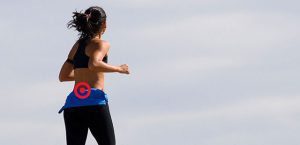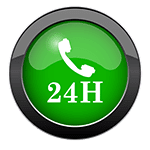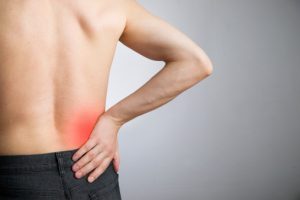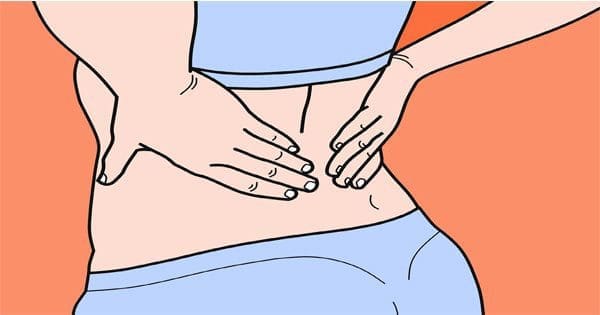Back pain is the second most regular side effect related explanation behind exercise based recuperation in the United States. Up to 84% of grown-ups have low back pain eventually in their lives, with sciatica influencing up to 40% of those with low back pain. The long haul result of low back pain is for the most part good, yet relentless indications influence a great many people. Sciatica represents around 5% of individuals with back pain who go on handicap, and for up to 75% of the expenses related with low back and hip pain products Noninvasive mediation, for example, non-intrusive treatment is an essential apparatus that can assume a huge part in decreasing human services costs.
Table of Contents
What is Sciatica?
The term sciatica portrays the indications of leg pain-and potentially shivering, deadness or shortcoming that begin in the lower back and go through the butt cheek and down the expansive sciatic nerve in the back of the leg.
Sciatica is not a therapeutic finding it is an indication of a basic restorative condition, for example, a lumbar herniated circle, degenerative plate ailment, or spinal stenosis. Sciatica is frequently described by one or a mix of the following side effects:
Steady pain in just a single side of the butt cheek or leg (once in a while can happen in both legs)
Pain that is more terrible when sitting
Leg pain that is regularly portrayed as copying, shivering or singing (versus a dull hurt)
Shortcoming, deadness or trouble moving the leg or foot
A sharp pain that may make it hard to stand up or to walk
Step by Step Instructions: Treat Sciatica Symptoms Brought On By Low Back Pain

Ultrasound: Ultrasound is regularly suggested before extending of the piriformis muscle. Ultrasound is a type of profound warming in which sound waves are connected to the skin and infiltrate into the delicate tissues. Ultrasound is particularly helpful in alleviating intense scenes of pain and may upgrade tissue recuperating.
[youtube https://www.youtube.com/watch?v=JbxBsjNfyz4?feature=oembed]
TENS: Transcutaneous Electrical Nerve Incitement
Is a back treatment methodology that utilizations low voltage electric current to ease pain. TENS is viable for treatment since it causes the neighborhood arrival of neurotransmitters, for example, serotonin to obstruct the pain motions in the cerebrum.
Iontophoresis: Iontophoresis gives a methods for controlling pharmaceutical transdermally utilizing a low, guide electrical current to drive it to the included tissues of the low back. Every now and again, it is utilized to oversee mitigating drugs to nearby tissues. An auxiliary advantage for iontophoresis is the electrical current itself that can instantly decrease side effects by blocking pain receptors.
Footing table: Lumbar footing utilizing a footing table works under the hypothesis that division of the lumbar vertebrae will diminish impingement of the spinal nerves and in addition diminish weight between the circles.


Sciatica occurs when a person experiences feelings of numbness or tingling, which begins in the lower back region, through the buttocks, and runs down the leg—the sciatic nerve.
Nerve pain resulting from sciatica is a symptom related to an underlying condition that affects the sciatic nerve. Conditions that can lead to sciatica are a lumbar herniated disc, degenerative disc disease, and spinal stenosis.
Fortunately, physical therapy and exercises can help relieve sciatic nerve pain and improve the condition by increasing strength through stretching and aerobic techniques.
Sciatic Stretches
Sciatic nerve pain stretches aim to target the muscles that lead to pain. These muscles are often tight and inflexible, so stretching can loosen the tightness and minimize pain.
Stretching the hamstring is best for dealing with sciatic nerve pain, as the sciatic nerve runs through the hamstring—this is the area behind the quadriceps, underneath your buttocks.
Here are some examples of sciatic nerve pain stretches:
Towel hamstring stretch: Lay on your back with a towel wrapped around your thigh. With your leg up in the air and your hands grasping the towel, begin to straighten the knee until a stretch is felt at the back of the thigh. Hold the position for 10 seconds and gradually begin to increase the duration of the hold.
Wall hamstring stretch: Once again, lay on the floor with your buttocks up against a wall. With one leg stretched out in front and the other up against the wall, push the knee straight until a stretch is felt.
Hamstring stretch while sitting: Sit at the edge of a chair and have one leg straight out in front of you with your heel on the floor, toes pointing upward. Sit up straight while pushing your navel towards your thigh without actually leaning over. Hold the stretch for 30 seconds and repeat three times for each leg.
Pigeon pose: Lay with your back flat on the floor, then raise your right leg up to a right angle and interlock your fingers behind the thigh. Raise you left leg, resting your right ankle on its knee, and press that knee towards your head to stretch the tiny piriformis muscle. Lower both legs then repeat on the opposite side.
Knee to opposite shoulder: Begin by lying flat on your back with your feet flexed upwards. Lift your right leg, then link your fingers around your knee and pull it gently across your body towards the opposite shoulder. Hold the position for 30 seconds before returning to the starting position and repeat the movement with your left leg.
Sitting spinal stretch: Start by sitting on the ground with your legs extended in front of you and your feet flexed upwards. Bend your right knee and cross your leg over the left, planting your right foot flat on the outside of your left knee. Turn your upper body and place your left elbow to the outside of your right knee, helping to keep your body turned towards the right. Hold this pose for 30 seconds, then return to the starting position and repeat on the left side.
Standing hamstring stretch: Place your right foot on an elevated surface either at or below hip level and flex your foot so that your toes and leg are straight. Bend forward towards your foot and reach for your toes – the further you bend the deeper the stretch. Hold this position for 30 seconds, then switch legs.
Reclining Cow’s Face Pose: Lay face-up on your back and cross your left leg over your right. Raise both legs off the floor, flexing both feet, and reach for your outer ankles to hug your legs towards your stomach. Hold for 30 seconds, then switch sides and repeat.
Low Lunge: Begin in a regular lunge position with your right leg forward and your left knee on the ground. The top of your left foot should be flat on the ground. Lift your torso slowly and rest your hands on your right thigh, then lean your hips forward to stretch the left hip flexor. Hold this pose for 30 seconds, then repeat on the other side.
Treating Sciatica Pain
Sciatica Exercises
Exercising for sciatica nerve pain has been found to be more effective than simply staying in bed. Strengthening and low aerobic exercises should be your go-to, as they offer the most relief from sciatica nerve pain.
Strengthening exercises should work to strengthen the spinal column and the supporting muscles, tendons, and ligaments. This includes targeting the lower back, abdomen, glutes, and hip muscles.
Low aerobic exercises consist of walking, swimming, and pool therapies. They aim to increase fluid and nutrient exchange in order to promote a healthy environment for healing. Furthermore, low aerobic exercises work as a natural painkiller, as exercise has been shown to help alleviate pain by increasing endorphins in the body.
Speak to your physical therapist or trainer with regards to appropriate exercises to help strengthen your muscles in order to reduce sciatica nerve pain.
Other Tips To Relieve Sciatica Nerve Pain
Along with stretches and exercises, there are other home remedies you can utilize in order to alleviate sciatica nerve pain.
Other tips to improve sciatica nerve pain include:
- Take over-the-counter anti-inflammatory medications
- Apply hot and cold packs
- Wear a supporting lower back brace
- Get proper sleep
- Try yoga
- Quit smoking – smokers have higher incidences of back pain
- Maintain a healthy weight
- Practice maintaining proper posture
- Ensure you lift and carry objects properly
If you are on a long driving trip or flight, ensure you take plenty of moments to move around as much as possible, i.e., make stops, get up from your seat
By practicing these tips as well, you can help improve sciatica nerve pain and prevent future injury.
Related:Â How to get rid of sciatica pain
People who read this article benefited from…
Related Reading:
Spinal stenosis causes, symptoms, natural treatment, and exercises
Exercises and tips to improve posture and alleviate back pain
Sources:
http://www.prevention.com/fitness/yoga/stretches-sciatic-nerve-pain
http://www.healthline.com/desktop-article/back-pain/sciatic-stretches
http://www.nytimes.com/health/guides/disease/sciatica/prevention-and-self-care.html
http://www.spine-health.com/wellness/exercise/sciatica-exercises-sciatica-pain-relief

Related articles
Post Disclaimer
Professional Scope of Practice *
The information herein on "Sciatica From Low Back & Hip Pain" is not intended to replace a one-on-one relationship with a qualified health care professional or licensed physician and is not medical advice. We encourage you to make healthcare decisions based on your research and partnership with a qualified healthcare professional.
Blog Information & Scope Discussions
Welcome to El Paso's Premier Wellness, Personal Injury Care Clinic & Wellness Blog, where Dr. Alex Jimenez, DC, FNP-C, a Multi-State board-certified Family Practice Nurse Practitioner (FNP-BC) and Chiropractor (DC), presents insights on how our multidisciplinary team is dedicated to holistic healing and personalized care. Our practice aligns with evidence-based treatment protocols inspired by integrative medicine principles, similar to those found on this site and our family practice-based chiromed.com site, focusing on restoring health naturally for patients of all ages.
Our areas of multidisciplinary practice include Wellness & Nutrition, Chronic Pain, Personal Injury, Auto Accident Care, Work Injuries, Back Injury, Low Back Pain, Neck Pain, Migraine Headaches, Sports Injuries, Severe Sciatica, Scoliosis, Complex Herniated Discs, Fibromyalgia, Chronic Pain, Complex Injuries, Stress Management, Functional Medicine Treatments, and in-scope care protocols.
Our information scope is multidisciplinary, focusing on musculoskeletal and physical medicine, wellness, contributing etiological viscerosomatic disturbances within clinical presentations, associated somato-visceral reflex clinical dynamics, subluxation complexes, sensitive health issues, and functional medicine articles, topics, and discussions.
We provide and present clinical collaboration with specialists from various disciplines. Each specialist is governed by their professional scope of practice and their jurisdiction of licensure. We use functional health & wellness protocols to treat and support care for musculoskeletal injuries or disorders.
Our videos, posts, topics, and insights address clinical matters and issues that are directly or indirectly related to our clinical scope of practice.
Our office has made a reasonable effort to provide supportive citations and has identified relevant research studies that support our posts. We provide copies of supporting research studies upon request to regulatory boards and the public.
We understand that we cover matters that require an additional explanation of how they may assist in a particular care plan or treatment protocol; therefore, to discuss the subject matter above further, please feel free to ask Dr. Alex Jimenez, DC, APRN, FNP-BC, or contact us at 915-850-0900.
We are here to help you and your family.
Blessings
Dr. Alex Jimenez DC, MSACP, APRN, FNP-BC*, CCST, IFMCP, CFMP, ATN
email: coach@elpasofunctionalmedicine.com
Multidisciplinary Licensing & Board Certifications:
Licensed as a Doctor of Chiropractic (DC) in Texas & New Mexico*
Texas DC License #: TX5807, Verified: TX5807
New Mexico DC License #: NM-DC2182, Verified: NM-DC2182
Multi-State Advanced Practice Registered Nurse (APRN*) in Texas & Multi-States
Multistate Compact APRN License by Endorsement (42 States)
Texas APRN License #: 1191402, Verified: 1191402 *
Florida APRN License #: 11043890, Verified: APRN11043890 *
License Verification Link: Nursys License Verifier
* Prescriptive Authority Authorized
ANCC FNP-BC: Board Certified Nurse Practitioner*
Compact Status: Multi-State License: Authorized to Practice in 40 States*
Graduate with Honors: ICHS: MSN-FNP (Family Nurse Practitioner Program)
Degree Granted. Master's in Family Practice MSN Diploma (Cum Laude)
Dr. Alex Jimenez, DC, APRN, FNP-BC*, CFMP, IFMCP, ATN, CCST
My Digital Business Card
RN: Registered Nurse
APRNP: Advanced Practice Registered Nurse
FNP: Family Practice Specialization
DC: Doctor of Chiropractic
CFMP: Certified Functional Medicine Provider
MSN-FNP: Master of Science in Family Practice Medicine
MSACP: Master of Science in Advanced Clinical Practice
IFMCP: Institute of Functional Medicine
CCST: Certified Chiropractic Spinal Trauma
ATN: Advanced Translational Neutrogenomics








 Again, We Welcome You.
Again, We Welcome You.
Comments are closed.